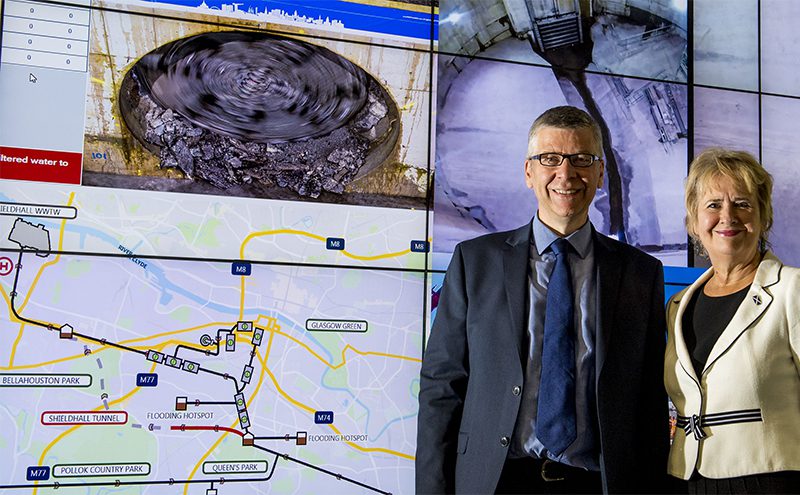
Scotland’s biggest sewer superstructure has become operational in a feat of engineering hailed as “extraordinary” by Environment Secretary Roseanna Cunningham.
She said the Shieldhall Tunnel in Glasgow built on the legacy of the country’s engineering and water pioneers and would benefit communities for centuries to come.
Ms Cunningham visited the Scottish Water control room where the country’s vast network of pipes and sewers are managed and monitored around the clock.
Flows have started to run through the tunnel from across the south-side of Glasgow with communities expected to benefit from fewer flooding incidents and improved environmental conditions.
Ms Cunningham said: “The strategic importance of the Shieldhall Tunnel as part of the ongoing investment across Glasgow by Scottish Water cannot be understated. It’s a fantastic example of the capital investment programme delivering real long-term benefits for communities to reduce flooding, help deal with the impact of climate change and improve the environment.
“Much of our underground infrastructure for water and waste water dates to the Victorian era when we proudly led the way in introducing massive improvements to deliver positive impact on the health of our communities. Communities across Glasgow will benefit for years to come from this latest extraordinary feat of engineering which lies hidden deep beneath the city.
The tunnel stretches for 3.1 miles from Craigton to Queen’s Park via Bellahouston and Pollok parks. It was constructed over almost two years by a team of more than 100 workers, from countries across the world, using a state-of-the-art tunnel boring machine (TBM).
The tunnel will alleviate pressure on the existing waste water network with 90,000 cubic metres of extra storm water storage. That’s more than 108m litres or the equivalent of 36 Olympic-sized swimming pools.
Some of the key facts and figures about the £100 million tunnel include: More than 500,000 tonnes of earth, stone and clay was excavated; more than 3200 six-segment concrete rings were installed; it took over 1.5 million working hours to construct; and over 90% of material excavated was recycled.
The tunnel will substantially reduce the amount and frequency of waste water discharged from a number of Combined Sewer Overflows (CSOs) and enable more than 90% of what was discharged at these CSOs to be treated at Shieldhall WWTW..
Douglas Millican, Scottish Water’s Chief Executive, said: “The city’s waste water infrastructure required major improvements to help transform it into a modern, integrated and sustainable system which will improve the environment and biodiversity on the River Clyde and help tackle flooding.
Many hundreds of people have worked as part of Costain VINCI Construction Grand Projets Joint Venture (CVJV), which was set up to deliver the tunnel.






